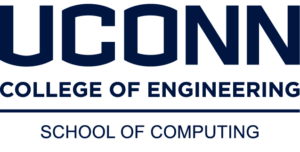ISE: Information and Software Engineering Laboratory
Description
The Information and Software Engineering (ISE) Laboratory of the School of Computing is a merging of faculty, graduate, and undergraduate students with joint interests in the areas of software engineering, information technologies, security, data and database engineering, performance modeling and engineering, and network and Internet technologies. Basically, the involved individuals are interested in the incorporation of an engineering approach and discipline to the generation of information and the promotion of the better use of information and resources. Research projects for the laboratory are listed and briefly discussed below.
Reusable Software Components, Metrics, and Framework
DRE, short for design-reuse evaluation, is an object-oriented and component-based reuse tool that has been under continuous design, development and improvement (with new capabilities) over the past three years. During the 1999/2000 academic year, the availability of this tool was crucial in support of obtaining funding from Electric Boat, Inc., on exploring reusable components for the shipbuilding domain. The DRE software package contains over 7,500 lines of code and was developed using Java. DRE can analyze the reuse potential of Java software. In a parallel effort to the DRE prototype as described above, the ideas and concepts for our reuse model and framework are being transitioned into the UML tool Together CC, yielding DRE/TCC. Together CC has the ability to access the internal Java data structures that are utilized to store a UML design, and allows the addition of “plug-ins” that add custom functionality via Java code. This work is conducted jointly with United States Naval Academy and supported by Electric Boat. Publications have occurred at OOPSLA 97 and SSR 01. A current Ph.D. student has been formalizing the reuse model and designing/utilizing genetic algorithms for reusability assessment/analysis.
For further information contact: S. Demurjian.
Distributed Security Model/Framework for Assurance
Over the past 3 years, we have been working on defining a model, framework, and associated prototype system that realizes distributed discretionary and mandatory access control security. The purpose of the work is to control access to legacy and COTS APIs via a mechanism that limits which users (clients) can call which methods of the different APIs that are available in a distributed application, by limiting based on time, data values, and security clearance level. Publications have appeared in IFIP WG 11.3, ISSEA 02 and SACMAT 02. The current prototype works with Windows NT 4.0 and Linux as OSs, Microsoft Access and Oracle as databases, and JINI 1.1 running under Java 1.3 and Visibroker’s middleware. Our prototype supports a Course DB Resource and a Course Client (GUI tool) where students can query course information and enroll in classes, and faculty can query and modify the class schedule. To realize distributed MAC and DAC, a Unified Security Resource (USR) has been prototyped in both JINI and CORBA. In addition, two other security officer tools have been designed and prototyped, namely: a Security Policy Client (SPC) to manage user roles and establish privileges, and a Security Authorization Client (SAC) for associating roles with actual users. The underlying security mechanism is transparent to clients utilizing tools.
For further information please contact: S. Demurjian.
Feasibility Study of Information System Reengineering
The work for this project has been ongoing since 1999, as funded by the State of Connecticut Insurance Department. The focus of the effort is to reengineer the current computing platforms (late 1980s) to 21st century technologies. The effort will concentrate on reengineering all divisions, namely, Licensing, Consumer Affairs, Market Conduct, Life & Health, Property & Casualty, Fraud, Examinations, Managed Care, and the Business Office. The effort focuses on the rapid prototyping of conceptual designs by focusing on the graphical user interface (GUI) requirements for all divisions, with progress to date on the Licensing, Consumer Affairs, and Examinations Divisions. Other tasks have included: technology assessment and selection, database design and interoperability, and design documentation and requirements specification. For further information please contact: S. Demurjian or D. G. Shin.
Software Performance Engineering
The proliferation of parallel/distributed/network computing requires new software design methodologies. First, the system needs to satisfy not only a desired set of functional requirements, but also a set of performance requirements. Second, designing software architecture becomes an essential issue with the new computer hardware and communication systems. The methodology is based on developing a hierarchical performance framework that consists of two structures, namely, vertical structure which captures the top-down software design decomposition and bottom-up performance evaluation, and horizontal structure which performs structuring the software, partitioning it into processes, and allocating created processes to processors.
For further Information, please contact R. Ammar.
Faculty Members
Steven A. Demurjian, (Director) Computer Science and Engineering, University of Connecticut
Reda A. Ammar, Computer Science and Engineering, University of Connecticut
Dong-Guk Shin, Computer Science and Engineering, University of Connecticut
